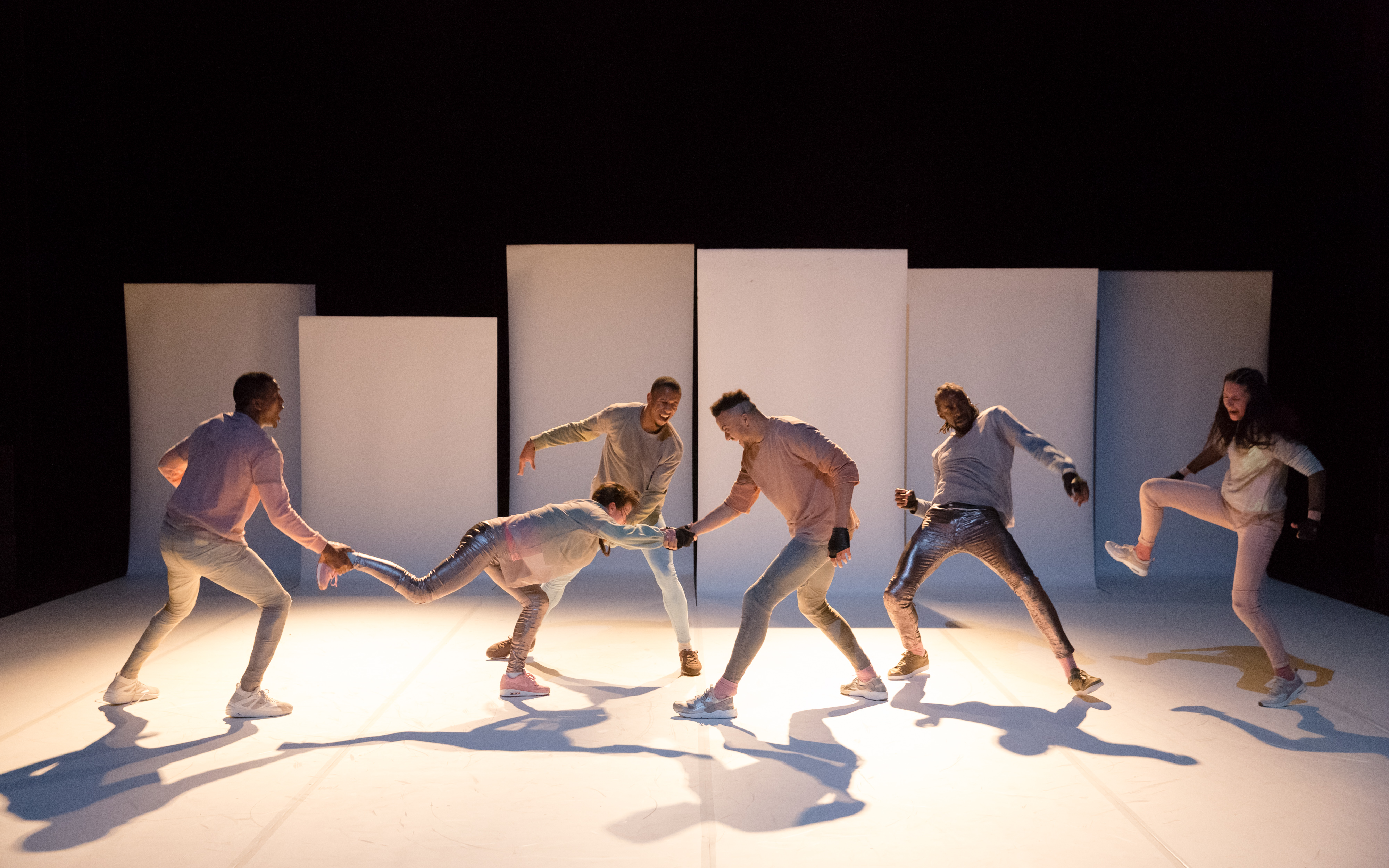Starting from black-out, the stage comprises six white stretched-material columns, set upstage; mid-stage is a robed and masked ‘conductor’, stomping rhythmically, while wielding a microphone. The stomps get faster, each one creating – and adding to – the static-like, ambient noise.
Slowly body parts appear from the edges of each column; the dancers holding (parts of) themselves – and each other – forth, as if relating to some kind of mystical ‘pied-piper’.
There seems to be no discernible physical stress, despite the convoluted shapes and contortions the dancers hold, as they present themselves and each other.
Far from a ‘big-bang’, the piece seems to chart the slow, simmering evolution through ‘our’ understanding of time, space, environment and self.
At this point each dancer brings separate articles of percussion onto the stage and – after a smooth transition – a drum-kit is set up, stage left.
The dancers then encircle the ‘conductor’; they walk around him ever faster, engaging with each other sparingly, via lower and lower locked-arm pirouettes.
At a certain point, they get closer to the conductor, taking it in turns to offer up an oral utterance into his microphone; each guttural pronouncement becoming part of the sparse aural landscape.
It seems both ironic – and refreshing – that the standout performers were female.
Finally, the conductor leaves the microphone in the middle of the stage and moves to the drum kit (a mix of acoustic and electronic percussion).
The dancers start physically relating to the rhythms generated by the conductor’s pre-recorded loops and live playing, each dancer showing off their own style and aesthetic.
As the performers become more physically articulate and self-aware, and more inter-dependent, we see the start of a conversation between the conductor, the dancers, and the environment.
At this point, one would have expected the rhythms to energise, not just the performers, but the audience as well. Instead, the loops and ambient sounds tended to blend-in, somewhat – none of the syncopations really ‘hitting home’.
A shame.
As this is a hip-hop dance theatre piece (deriving from the ‘B-Boy’ aesthetic) it seems both ironic – and refreshing – that the standout performers were female.
Out of the six performers, Amélie Jousseaume and Camile Regneault were the ones who caught the eye; their slo-mo freezes, precision, balance and strength were a joy to behold. In fact, they seemed to leave the other four performers behind somewhat.
The piece ends as it began, with each dancer behind their respective white columns (albeit bent more to their own wills).
It seems to deal with many age-old ideas about the birth of free will, society and human co-operation – not just with each other, but with the environment.
It also deals with the idea of ‘which came first – the music or the dance?’
These are all valid questions; I just wish that this particular exploration had a better soundtrack, and a more exciting and humorous execution.

























